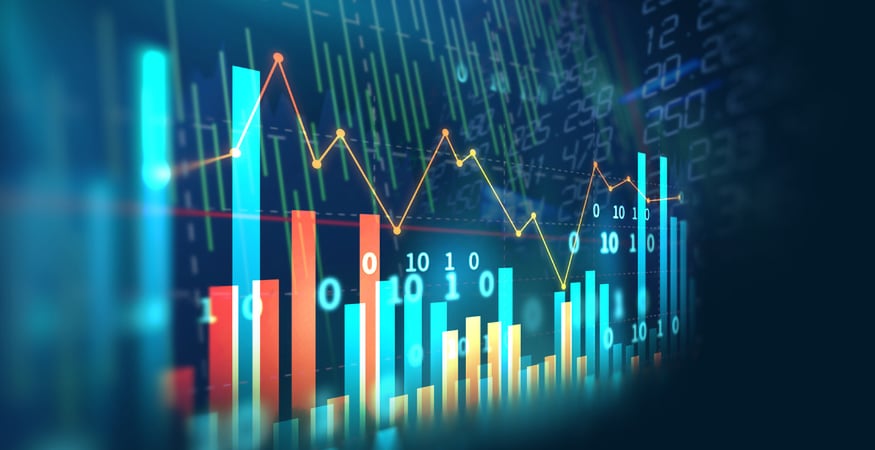Every office environment in the country would like to control printing costs. The cumulative costs are staggering: there are some studies that suggest the average office worker uses 10,000 sheets of copy paper every year, with as much as half never getting picked up from the printer.
All that paper isn’t just wasteful, it’s expensive! How do you reduce printing costs, and how can you get your entire organization motivated to do their part?
Think before you print, and use these simple, easy-to-implement tips from our Managed Print experts to learn how to reduce printing costs:
- Reduce printing
- Print double-sided copies
- Audit individual use
- Reduce your printer fleet
- Print in draft mode
- Print in black and white
- Adjust page margins
- Reduce font sizes
- Choose different fonts
- Adjust default settings
- Go digital whenever possible
- Partner with the pros
1. Reduce Printing
Sounds simple, but not all page printing is necessary. Reducing paper waste in the workplace may require a mind shift in how information is delivered. Remind employees, verbally and with friendly signage posted near each printing device. We saw this simply stated sign in a customer’s workplace: “Ask yourself: how many copies do I really need?”
Too often, copies are made for things like meetings and presentations when the participants would prefer to view the documents online or have multiple PowerPoint thumbnails per page. Online documents can be editable, too, so people can view them during and after the meeting and add notes or next steps. And, when it comes to distribution lists, review yours regularly to ensure that everyone still needs to receive the information being printed.
2. Print Double-Sided Copies
Consider duplex printing (printing on both sides) to cut your paper use nearly in half. An internal study by Citigroup showed that if each of its employees printed double-sided pages to conserve just one sheet of paper each week, the savings would equate to $700,000 a year! Granted, they are a major global corporation, but savings from double-sided printing can add up, even for smaller organizations.
3. Audit Individual Use
Today’s multifunction printer technologies can measure how many copies individual staff members make each month. Additional print management software can provide even more robust analytics and data. Most are surprised to learn just how much paper they’re actually going through and, with that knowledge, they’re more likely to self-regulate the number they print.
4. Reduce Your Printer Fleet
Also consider minimizing the number of individual personal printers and desktop printers your office uses. Many desktop printers are extremely inefficient and aren’t even ENERGY STAR® rated. Consolidating a printer fleet is one of the easiest ways to save money.

5. Print in Draft Mode
While the cost of paper can add up, printer toner or ink is notoriously expensive, especially for inkjet desktop printers. Unless your document requires extreme detail and the highest quality, such as for a client presentation or a brochure, draft mode will typically suffice. Printing in draft mode reduces the resolution of the document and, in turn, reduces the amount of ink used while remaining legible. You can change this setting in your printer menu.
6. Print in Black and White
Set computer and copier settings to automatically print in black and white — printing in color every time is expensive. You’ll find the settings in the computer’s print dialogue box.
7. Adjust Page Margins
Most Word documents are set to 1” or 1.25”. Adjusting the margins to be narrower — say .75” or .5” — will allow more of the paper to be used. The cumulative effect will mean fewer pages printed over time.
8. Reduce Font Sizes
Similarly to reducing margins, reducing the point size of your type font to 10 instead of 11 or 12 will use less paper over time.
9. Choose Different Fonts
Some fonts actually use less ink than others (though the effect is undoubtedly modest). Arial, for example, uses less ink than serif fonts like Times New Roman or Garamond.
10. Adjust Default Settings
Don’t assume employees will remember to manually change all those aforementioned printer or computer settings for every print job. Changing your computer or copier default settings so they automatically print double-sided, in black and white, in draft mode, etc. is the easiest way to help people “remember.”
11. Go Digital Whenever Possible
Companies in the U.S. spend billions on printed forms each year, most of which are outdated within a few months. Not only that, but the typical employee spends a lot of time looking for printed documents lurking in filing cabinets. All that lost productivity and employee time adds up and costs companies money.
When electronic forms are organized and accessible online through a document management system, frequently used forms can be filled out and distributed quickly and easily without ever being printed, saving valuable time and money in the process. How important is it to maintain digital assets? It’s estimated that 70% of businesses who rely on paper-based records could fail within three weeks if all of them were lost in a fire or flood.
12. Partner With The Pros
In addition to reducing paper waste, a Managed Print service (MPS) can help you uncover additional office printing environment expenses you may not have even thought of. When you partner with an expert in office technology, like the Gordon Flesch Company, you have a team on your side thinking about the efficiency and productivity of your business every day.
One of the ways we help organizations like yours reduce printer-related costs is to proactively perform maintenance on your printers and copiers so they work properly at all times.
The other way is by assessing your processes and equipment, then developing a smart plan that gets the most out of every printer (and eliminates those that aren’t needed), and recommending functionality that allows you to monitor, measure and minimize your paper and toner usage. Explore how Managed Print services works and its many benefits by accessing our complimentary resource below, The Beginner’s Guide to Managed Print Services.
Just want to get started? Our local, attentive teams are eager to connect and help you begin reducing your print costs today, so reach out to talk through next steps.











